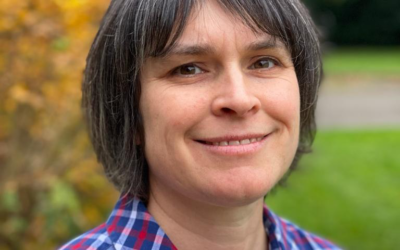Keith Souter looks at homeopathic medicines suitable for common ear, nose & throat problems
Otorhinolaryngology is the branch of medicine and surgery that specialises in the diagnosis and treatment of conditions affecting the ears, nose and throat (ENT), as well as head and neck disorders. People are very susceptible to a wide range of ailments that can produce symptoms affecting the ears, nose and throat separately or together.
Respiratory problems are extremely common in general practice, accounting for almost 30% of consultations. Of these about half are due to upper respiratory and throat infections. Homeopathic medicines when judiciously selected to cover the patient’s pattern of symptoms will often shorten the course of the problem or even nip it in the bud. In addition, more chronic problems affecting the ears and nose such as perennial rhinitis, nasal polyps, and some cases of tinnitus will often respond very well to homeopathic intervention.
Interconnected anatomy
The ears, nose and throat are all interconnected. The nose has several functions. Lined with sense organs it is, as we all know, the organ of smell and is capable of detecting smells produced from as little as one molecule in a million. It also warms air and filters out particles and bacteria from inspired air. The nasal passages link up with the facial sinuses which are cavities within the bones around the eyes and within the cheek bones. A small structure called the Eustachian tube links the middle ear to the naso-pharynx which is the area of the upper throat that lies behind the nose. This has the job of equalising the pressure inside the middle ear with that outside the body and is the organ responsible for the popping sound you hear in the ears when you experience a change in altitude during a flight.
We describe the ear as having three parts: outer, middle and inner. The outer ear consists of the pinna which funnels sounds into the ear canal; while the middle ear is a closed chamber containing the three small ear bones or ossicles which transmit sound to the inner ear. The inner ear consists of the bony labyrinth, which has two components; the cochlea, or organ of hearing, and the semi-circular canals which control balance. With the ear, nose and throat being so physiologically linked, it is easy to see how a problem with one organ can affect the others.
Colds
Regardless of how under the weather it makes you feel, a cold is more of a minor ailment than a serious illness, yet it is one which has a huge economic impact in terms of lost days at work. In homeopathy it is appreciated that people do not get a “common” cold, but get instead an illness that is fairly unique to them. Streaming eyes, a running nose and frequent bouts of sneezing will easily be recognised as cold symptoms, but it’s the subtle differences between these types of symptoms that homeopaths use to identify the correct remedy. Matching up the symptom profile with an appropriate remedy profile means relief is close at hand. To illustrate this I’ve put together a list of medicines and the symptom profiles to which they are best suited.
- Allium cepa: Think of the symptoms that peeling an onion induce and you have the picture of the type of cold that Allium cepa, a homeopathic preparation of red onion, will alleviate. The eyes will be producing a watery discharge, but the nasal discharge may be quite acrid and cause the nose to become sore and raw around the nostrils. Generally, people with these symptoms feel better for being in the open air.
- Euphrasia: This remedy is for colds that are producing symptoms that are the antithesis of those treated by Allium cepa. The discharge from the eyes tends to be acrid and they may be quite inflamed, whereas the nasal discharge is bland.
- Arsenicum album: Derived from the metallic element arsenic, this remedy is good for people who are neat, tidy and slightly fussy with a tendency to get quite restless. Although the nose may feel blocked, it will run at the same time causing excoriation and soreness of the skin above the upper lip.
- Natrum muriaticum: This great polychrest – a remedy that has a broad range of uses – may be thought of when the cold is characterised by violent sneezing. Personal traits of the patient for whom this remedy is best suited include being partial to salt, along with a dislike of having a fuss made of them.
Nasal polyps
A nasal polyp is a benign, fleshy swelling that grows from the lining tissues of the nose and sometimes from the sinuses. They result in a profound feeling of nasal blockage and are common in people who suffer from allergic conditions like hay fever or asthma. Men are four-times more likely to get nasal polyps than women.
The Materia medica offers a number of remedies for this unpleasant nasal condition.
-
- Pulsatilla: Catarrhal problems often plague people who need Pulsatilla. They also tend to be peevish, are rarely thirsty and prefer being outdoors.
- Sanguinaria: This remedy can also bring relief to people who develop polyps. Dominant characteristics of the patient could be a hyper-sensitivity to smells which causes a reaction to flowers, aerosols and odours. And they may be prone to having more problems on their right side.
- Teucrium: This is actually the main homeopathic remedy for polyps, particularly if the individual has a history of other polyps, such as fibroids or colonic polyps.
Nose bleeds
Everyone suffers from a nose bleed at some time or other. But if you’re having recurrent nose bleeds then a medical assessment is sensible, because nasal cautery may be needed. It may also be a symptom of an underlying health problem, so a trip to your GP to get your blood pressure checked would be advisable. Nonetheless, Phosphorus may be indicated in people who have nose bleeds when excited, if the blood is always bright red, and they tend to enjoy being centre stage.
Allergic rhinitis
This is inflammation of the nose, which often manifests as itching, sneezing and a runny nose. If it is definitely seasonal, from May to August, then the individual may be reacting to tree or grass pollens in the early and middle season, then to fungal spores towards autumn. For this problem Arundo is indicated for an intensely itchy nose. But Wyethia will be more suitable for itching at the back of the nose and palate.
Sore throats
Sore throats are another common ailment causing sufferers to take time off school and work. But once again there are a number of different remedies that can be matched to specific symptoms.
-
- Belladonna: A great sore throat remedy indicated when the person’s throat suddenly becomes hot and sore and their tongue looks strawberry coated. And they may be flushed but with a pallor around the mouth.
- Calcarea carbonica: This great polychrest may help if there are large, doughy glands in the neck.
- Lac caninum: This is the remedy to think of when the pain moves from one side to the other.
- Lachesis: The sore throat starts of the left and the person hates the throat being touched. It may appear purplish. By contrast, Lycopodium is associated with right sided sore throats.
- Mercurius solubilis: Think of this when the mouth feels unclean and the tongue is coated with imprints of the teeth visible.
- Phytolacca: The throat feels dry, but swallowing sends a sensation of electric shocks up into the ears.
Sinusitis
This usually follows a cold and results in pain around the eyes and over the cheeks. It can be extremely painful and debilitating. Belladonna is often effective for sinusitis above the eyes. Hepar sulph comes to mind when the whole face feels sore and there is yellow nasal catarrh. Kali bich may help when there is profuse yellow discharge, crusting of the nose and pain in the face, which gets worse when the patient is bending over. Silica is indicated when there is extreme soreness and the head feels sore, is worse for noise, and the person wants to be wrapped up.
Earache
Generally, earache is cause by an ear infection and is most common in young children. There are a number of remedies that may help including Belladonna, Hepar sulph and Pulsatilla, all of which have already been mentioned. But there are others too:
-
- Ferrum Phosphoricum: Widely used as a quick-acting remedy for short-term conditions and suitable for treating earache particularly if the patient is not feverish.
- Aconite: When the earache comes on suddenly and the patient appears flushed, feverish and restless, then this remedy is indicated.
Vertigo
Vertigo is a feeling of being dizzy and off balance. It may occur as part of a cold or following a viral illness that affects the organs of balance in the ears. It is worth trying treatment for up to a couple of weeks. But if it persists it is definitely advisable to have this investigated to exclude Meniere’s disease, which affects the inner ear, or the presence of a more serious pathology such as an acoustic neuroma, a type of brain tumour that develops from the lining of the auditory nerve.
-
- Belladonna: Think of this if the patient is feverish and the vertigo is worse for turning in bed.
- Borax: This is indicated if there is a fear of downward movement, such as in a lift.
- Cinchona officinalis: Made from Peruvian bark, this is one of the main remedies. If the patient’s vertigo is part of a general infection, then it is likely that Cinchona officinalis is the medicine for them. Generally, though, this remedy is associated with tinnitus (noises in the ears) and headaches.
- Cocculus indica: Another very effective remedy. It is the classic travel sickness remedy.
Many of the homeopathic medicines highlighted above are available over the counter from your local homeopathic pharmacy. However, it is important to remember that if the symptoms persist you should always make an appointment to see a doctor.







